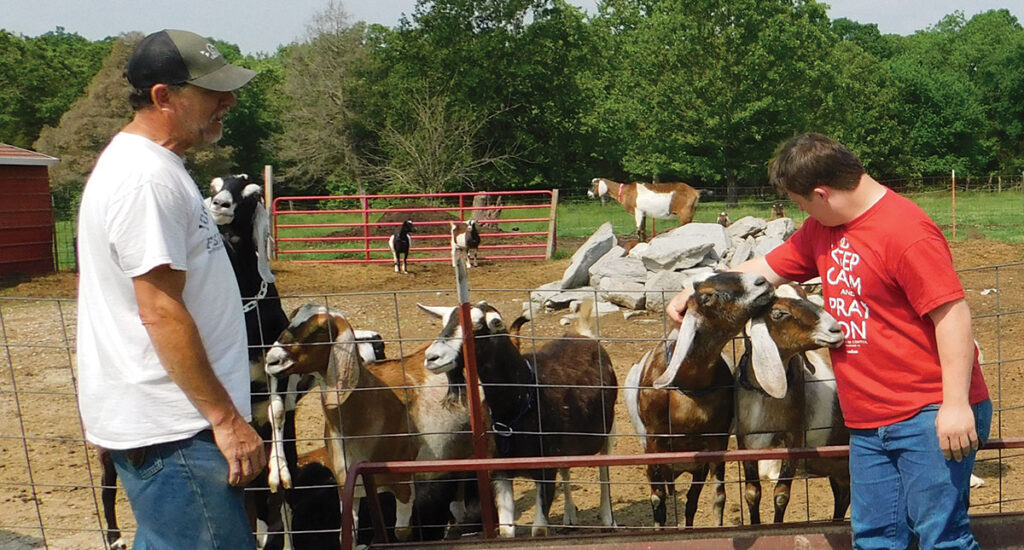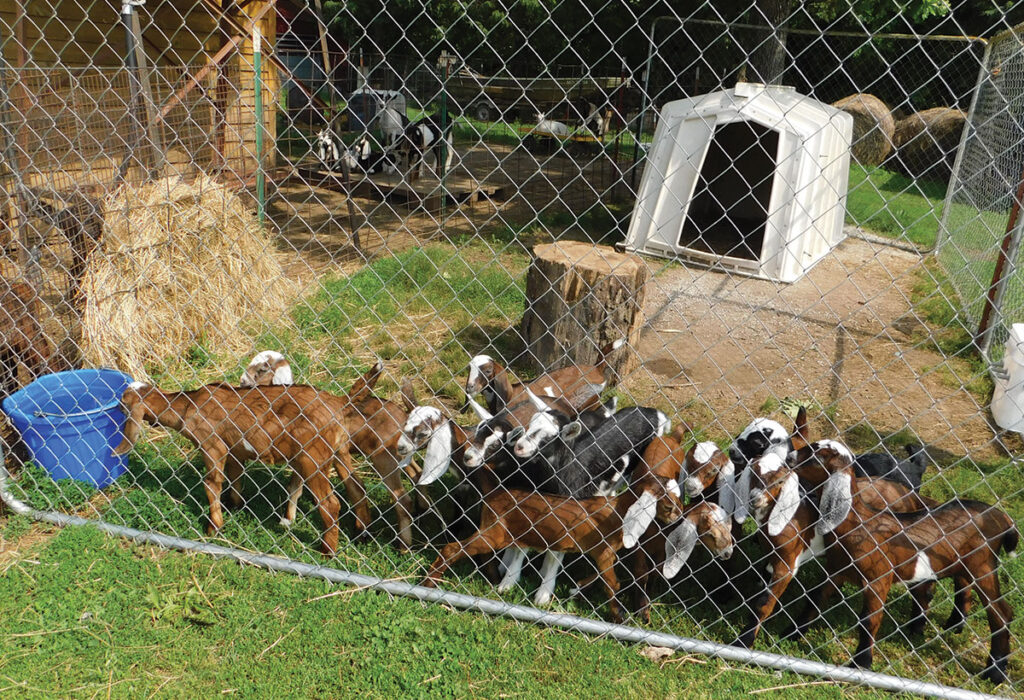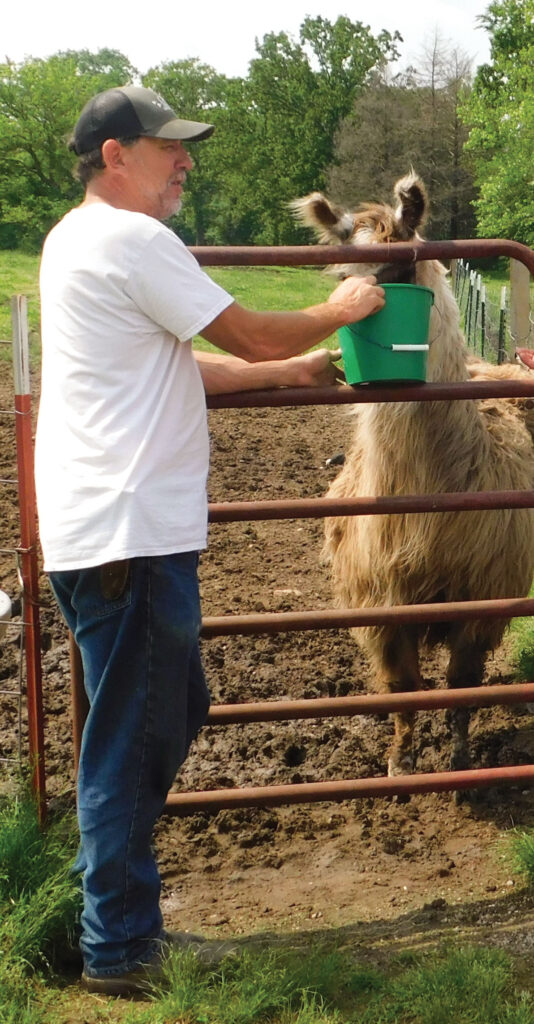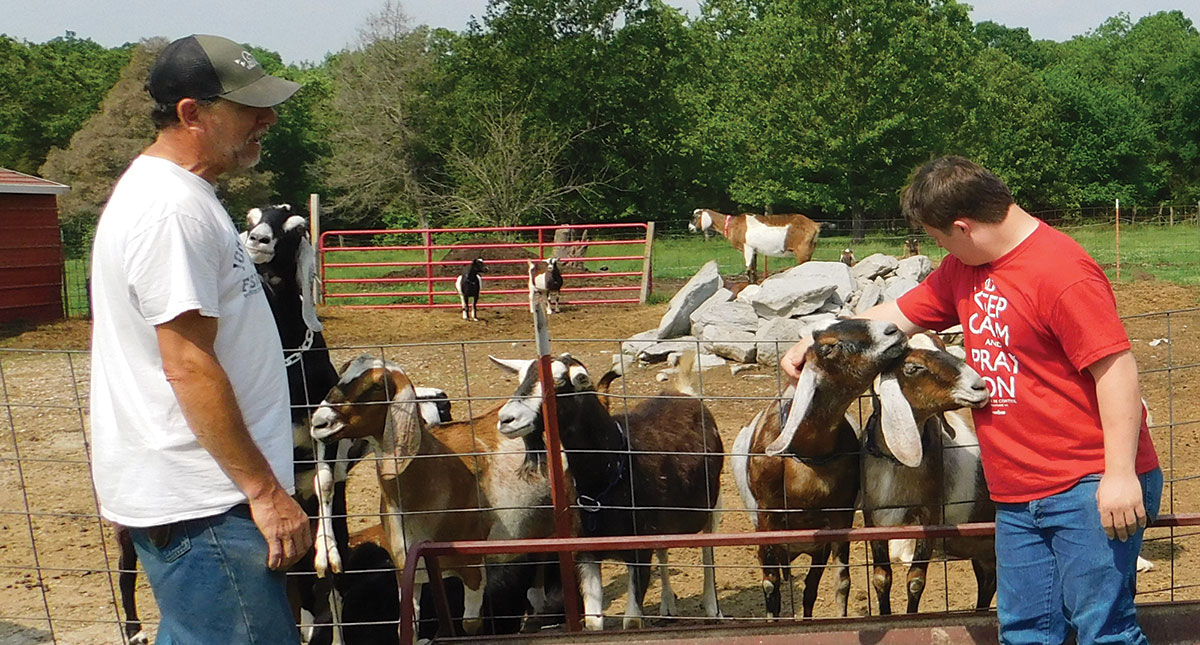
Cozy Creek Ranch breeds high-quality dairy goats for show and production
NEVADA, MO. – Ruthie and Shannon Green own and operate Cozy Creek Ranch in rural Vernon County. Their current population is about 60 goats including all the babies, 200 Black copper Maran chickens, two dairy cows and Sara the llama, which are all guarded by five Great Pyrenees.
The Greens show their dairy goats at national and local shows. The breeds consist of Nubian, Sables, Alpines and Recorded Grade.
Last year, at the national show was in Louisville, Ky., there were more than 2,000 animals. They placed first in the Get of Sire with Shannon’s recorded grade herd. Ruthie placed well with Cozy Creek Paris, a kid, earning fifth.
The high point last-year for Cozy Creek was to be chosen as a Herd of Distinction. The American Dairy Goat Association used DHIR show wins and linear appraisal to choose award winners.
Their feeding program is rather complicated. The adult goats are fed a 14 percent protein feed when outside. On the milk stand, they get 18 percent protein. They also are fed alfalfa and mixed hay, which is purchased. However, their favorite treat is animal crackers. Animals have free-choice baking soda, which aids in digestion and reduces bloat, and mineral.
Ruthie said she pasteurizes all the goat milk they use. They milk the goats by hand and milking machines. They are milking 19 head at this time. They milk every 12 hours and test once a month for butterfat and protein. The goats know their names and come when called and walk into the milking station.

“Goats have their own attitudes,” Ruthie said. “But they are very good and never kick. They are also very clean. They never go to the bathroom when being milked. If they walk in their feed, they won’t eat it.”
“I’ve sold every doe goat that is not a purebred. The last one I posted on our website, I had five people wanting it. What with the current milk price, it’s expensive to feed a family, but a goat will do that very nicely.”
Keeping goats healthy and trim is a full-time job. Their feet have to be trimmed every month. Ruthie did the math; with 60 animals, that’s 240 feet.
The goats rarely require medication. They vaccinate for tetanus and C and D annually.
“Worm are the enemy,” Shannon said. “Ruthie has a microscope and does slides. We worm according to the need told on the slide.”
They breed their females naturally when they are 16 months and have them kid only once a year.
“Spring kidding is a busy time. We know when the does are going to kid and we are like a couple of old mother hens hovering all around them,” Shannon said. “We usually have multiple births of twins, but several have triplets. Some have even had up to five kids. We are there for them.”
Ruthie, a trained nurse, agreed.
“We are there for every birth. There is heat and air-conditioning in the birthing room for the doe’s comfort when she is kidding.”
The babies weigh about 9 pounds when born, but twins or multiple births weigh 3 to 4 pounds each. Gestation is three days less than five months. Ruthie has gotten very good at being able to tell when the birth is about to happen.

All of the Cozy Creek goat kids are bottle fed for the first two days with milk from their mothers, which has been pasteurized to keep any germs away. The rating an udder is 35 percent out of 100, and nursing kids could damage the udder. After the first couple of days, a 5-gallon bucket with nipples on it is placed in the goat pen and the milk placed in it. It doesn’t take the kids long to discover what it is for.
“Nubians are the Jerseys of the goat world,” Shannon explained.
They have a couple does that give 2 gallons a day, but their goal is a gallon a day average. They are on the Dairy Herd Improvement Association milk test program and all goats are registered. Some of the goats have Milking Stars, which means they gave at least 10 pounds of milk during the testing time.
“Goat milk is good for you,” Ruthie said. “It is the number one milk consumed in the world. We’ve had many people come and tell us when they were little, they couldn’t drink cow’s milk and their parents got a goat. That ought to tell you something.”
The Greens drink goat milk and love it, if they can get any after the babies’ drink all they need. Ruthie also makes goat cheese and butter, ice cream and soap.
Cozy Creek goats have been all over the United States to shows, but the National event is in Pennsylvania this year and they do not plan to go.
“With the price of diesel, it would be like playing $1,500 out here in the road and running over it,” Ruthie said. The alternative plans included the Missouri State Fair at Sedalia, Mo., and are a large show in Neosho, Mo.
Their goats are marketed mostly through their website. They even have a waiting list for their goats.
“We have a wonderful life we feel with a perfect animal. They provide milk, meat, cheese, soap, and are the best friends a person can have,” Ruthie said.







